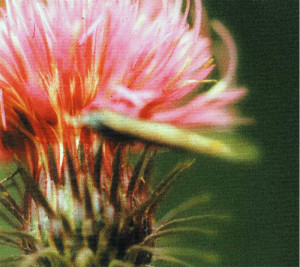From time immemorial a good many number of events take place in Euskal Herria and the whole of Europe to warmly receive the month of May. The rituals that have survived the passing of time are only traces of the great festivals celebrated by Greeks and Romans in honour of the goddess known as Maia. Maia embodied the concepts of fertility, growth and development of Nature’s flora and fauna. Those ancient celebrations are at the core of nowadays customs such as Maiatzeko zuhaitza, mayo or May tree (which involves the placement of a tree or post standing in the middle of the village square, and in some places a scarecrow or puppet, txorimaloa is attached to it), Maiatzeko lorak (May flowers) and Maiak (Feast in honour of Maia).
Maiak was at a time a well-established ritual in Gipuzkoa and Nafarroa but has nowadays nearly fallen into oblivion and survives only in the Baztan Valley of Nafarroa. It receives different names: Erregina eta Saratsa (The queen and the willow), Erreginetan (To play the queen), Maiatzeko erregina (May queen), or Maia-besta (Maia feast), and takes place on the last Sunday of May, even though in some villages it used to be observed on the first Sunday or even every Sunday.
Village young girls aged 10 or 12 played the leading role on this day. According to data gathered in certain places, the girls would have received First Communion on that year. After the annual Erregina and Saratsa election, both were dressed in white and their heads decorated with either red and white carnations or a crown of willow branches. In some cases they wore a straw hat adorned with flowers. The rest of the girls sang attired with a silk band from shoulder to waist. One of them would play the tambourine, which was the only instrument to accompany their singing.
There were two types of practice. In several villages the queen sat on a throne-looking table while her companions sang verses to passers-by and asked for a donation. In other locations the group of girls would go on a door-to-door visiting wassail.
The first stanza was dedicated to the housewife, requesting her to lean out of the window, and after it Erregina and Saratsa danced a kind of jota sung by the group of helpers. At the end the tambourine player appealed for money. Once the prize was collected, a special thanksgiving stanza was performed. If the household failed to turn up or if no money was donated, they were cursed.
There were specific verses addressed to girls, boys, men, women, married couples, single men and women, widows and widowers, and the priest. There was also a particular stanza reserved for outsiders.
In the olden times, the money gathered in the exit round was handed out for any necessary repairs to the church. Later it started to be divided into two: a part was used to buy candles for the Virgin Mary, and the rest was spent on sweets to be shared amongst the children. Sometimes an afternoon meal was organized at the queen’s house attended by all the girls and their mothers.




